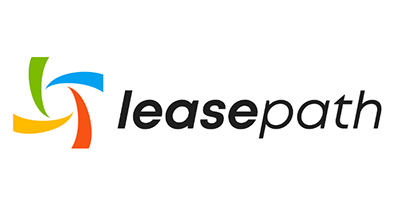
Despite challenging conditions, 2016 was a good year for the fleet sector. However, the immediate outlook is set to be more turbulent.
Clearly, the impact of Brexit will be a major factor, but there are other industry specific changes on the horizon:
● an HM Revenue and Customs review of Benefit in Kind tax, is expected to announce its findings in April 2017;
● the introduction of the new Worldwide Harmonized Light Duty Vehicles Test Procedure (WLTP) is due in September 2017; and
● new International Accounting Standards are due in January 2019.
All are set to keep the industry on its toes.
In car sales volume terms, 2016 finished well. New car registrations grew for a fifth successive year reaching a new record high of 2.69 million, 2.3% up on 2015, according to the Society of Motor Manufacturers and Traders (SMMT).
However, it has become increasingly clear that the pressure is on. From early in 2016, the market was being driven by the fleet sector, rather than private buyers, with retail sales ending the year down 0.2%. Lower sterling values are creating inflationary pressure on new cars and dealer profitability is now coming under pressure. In uncharted political and economic waters, the UK would like a bigger paddle, but has yet to find it!
On a positive note, private buyers have not left the market altogether. Used car sales rose 7.9% in 2016, principally driven by the availability of used car PCP (personal contract purchase) finance, which is now mirroring the success of new car finance. The success of new car finance has been remarkable with the Finance & Leasing Association (FLA) reporting that over 86.3% of private new car registrations were funded by an FLA member, penetration of the new car market is likely to be close to saturation level.
The growth of the used car market has been vital in supporting residual values, which to date have not experienced the falls that were widely expected as PCP and fleet units came to the end of their three-year cycles in ever larger numbers. It has also enabled the market to absorb what are widely held to be increases in dealer pre-registration activity.
Looking Ahead - a contraction
The SMMT is forecasting a contraction in new unit registrations of 5% in 2017 and a further 1.3% on 2018.
UK GDP is expected to fall back to 1.2% and UK consumer spending growth is forecast to drop by around 2%. All of this is set against a backdrop of rising inflation. These are all concerns, but ones that need to be seen in context; 2.3% CPI inflation may be above the 2% target, but it is relative to the unprecedented low inflation, low interest economy the UK has enjoyed for an extended period. In a marketplace that is commonly referred to as ‘dynamic’, inflation and interest rates have largely been static and a little inflation will be welcomed by many.
So, what will 2017 mean for the UK motor industry?
Despite the SMMT’s efforts to soften volume expectations, it seems clear that auto manufacturers will not want to see their sales contract. Already in 2016, the suggestion of pre-registrations and fleet growth is evidence of this reality. 2017, is set to be a buyer’s market and fleets will be well-placed, if there is the demand from them.
In November, the CBI’s growth forecast for 2017 picked up slightly and while the service sector led manufacturing, the potential to increase exports because of lower sterling is clearly possible. Consequently, the fleet outlook should mirror the Confederation of British Industry’s cautious optimism.
New testing regime
One of the key environmental challenges the car and fleet industries will face in 2017 is the introduction of the new Worldwide Harmonized Light Duty Vehicles Test Procedure (WLTP). This is due for implementation in September 2017.
The new testing regime is designed to provide a more realistic picture of fuel consumption. It also has implications for CO2 emissions. In turn, this has the very real potential to impact Benefit in Kind (BIK) taxation. It could force drivers changing their company car after that date to consider downsizing to avoid an increase in BIK tax of up to 35%, as it would also come with an increase in reported CO2 emissions. There is also the potential for additional National Insurance Contributions from employee and employer.
The industry is clearly struggling to come to terms with the new requirements and as recently as the start of December car manufacturers wrote to the European Commission to ask for more time to implement the rules, claiming the staged roll-out planning has become an 'impossible task'
Benefit-in-Kind and salary sacrifice
At this year’s Budget Statement, the government signalled that further taxation changes are on the horizon saying it would look at the range of BIK that attract income tax and National Insurance Contributions (NIC) advantages when provided as part of salary sacrifice arrangements. This has the very real potential to encapsulate company cars and car allowance schemes.
Deloitte claims as many as 500,000 company car drivers could be hit with the changes – around 50% of the 970,000 employees identified by HMRC as paying BIK tax on a car. But exact numbers are hard to establish – the BVRLA estimates between 80,000 to 100,000 company cars are sourced through traditional salary sacrifice schemes, while Fleet News FN50 figures from the UK’s top 50 leasing companies suggest a salary sacrifice fleet closer to 60,000 units. Deloitte, in turn, estimates that up to half of the remaining company car drivers – some 360,000-450,000 employees – have a cash allowance option.
The overall impact on the fleet sector is likely to be significant with ACFO deputy chairman Caroline Sandall stating: “This has the potential to fundamentally change the landscape of fleet provision,” adding, “it is vital fleets assess the impact for their organisation.”
The route ahead will become clearer in Q1 2017 following a period of consultation by HMRC with new rules expected to be adopted from April 2017.
Lease accounting changes
A little further ahead, the International Accounting Standards Board requirement for companies to identify leased assets on their balance sheets, and incur a liability for future rental payments from 1 January 2019, is a major change impacting operating leases (contract hire) that will need to be carefully managed and communicated.
The off-balance sheet treatment of vehicles on an operating lease has long been promoted as one of the principle advantages of contract hire. Keeping assets and liabilities off a balance sheet can help companies to maintain a low debt-to-equity ratio and enhance their ability to access finance.
While January 2019 might seem a long way away, the long-term nature of contract hire agreements means that it is a topic that will gain much airing in 2017.
From a purchase perspective, the ‘joker in the pack’ may be increasing OEM involvement in the distribution chain as seen by the direct to consumer model launched by Hyundai, soon to be replicated by Dacia.
The overall uncertainty will mean that all players across the motor industry must remain agile and seek out ways to create more value in the cars and services offered. In short, continuing endeavours to work smarter and with more imagination. Digitising the business model at all levels will become more important, especially in marketing and efforts to shorten the distribution chain, notably in remarketing.
There can be no question that the year will be challenging. A 5% drop in new car registrations is not what anyone wants, but if there is to be a silver lining, it is that a collapse in residual values, which very arguably would have even deeper implications for the whole industry, is less likely.
Alan Henson is Head of Sales and Customer Services at KeeResources






